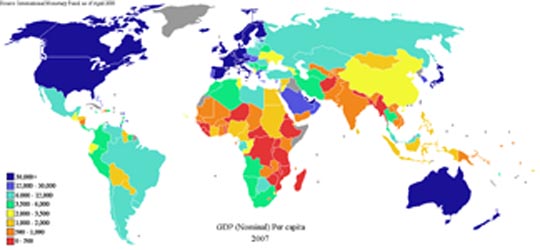Agricultural economics
General classifications
Microeconomics · Macroeconomics · History of economic thought · Methodology · Heterodox approaches
Techniques
Mathematical · Econometrics · Experimental · National accounting
Fields and subfields
Behavioral · Cultural · Evolutionary · Growth · Development · History · International · Economic systems · Monetary and Financial · Public and Welfare economics · Health · Labour · Managerial · Business · Information · Game theory
Industrial organization · Law · Agricultural · Natural resource · Environmental · Ecological · Urban · Rural · Regional
Agricultural economics originally applied the principles of economics to the production of crops and livestock — a discipline known as agronomics. Agronomics was a branch of economics that specifically dealt with land usage. It focused on maximizing the yield of crops while maintaining a good soil ecosystem. Throughout the 20th century the discipline expanded and the current scope of the discipline is much broader. Agricultural economics today includes a variety of applied areas, having considerable overlap with conventional economics.
Origins
Economics is the study of resource allocation under scarcity. Agronomics, or the application of economic methods to optimizing the decisions made by agricultural producers, grew to prominence around the turn of the 20th century. The field of agricultural economics can be traced out to works on land economics. Henry Charles Taylor was the greatest contributor with the establishment of the Department of Agricultural Economics at Wisconsin. Another contributor, Theodore Schultz was among the first to examine development economics as a problem related directly to agriculture. Schultz was also instrumental in establishing econometrics as a tool for use in analyzing agricultural economics empirically; he noted in his landmark 1956 article that agricultural supply analysis is rooted in "shifting sand", implying that it was and is simply not being done correctly.
Areas of Concentration
- Econometrics- International Development
- Community and rural development
- Food safety and nutrition
- International trade
- Natural resource and environmental economics
- Production economics
- Risk and uncertainty
- Consumer behavior and household economics
- Health economics
- Labor economics
- Forestry economics
- Analysis of markets and competition
- Agribusiness
- Agricultural Marketing
- Agricultural policy
- Industrial organization
- Marketing of agricultural products
- Rural sociology
Agricultural economics tends to be more microeconomic oriented. Many undergraduate Agricultural Economics degrees given by US land-grant universities tend to be more like a traditional business degree rather than a traditional economics degree. At the graduate level, many agricultural economics programs focus on a wide variety of applied microeconomic topics. During the last decades, graduates from Agricultural Economics departments across America find jobs in diversified sectors of the economy; from corporations to government. Their demand is driven by their pragmatism, optimization and decision making skills, and their skills in statistical modelling.
References
- Karl A. Fox (1987), Agricultural Economics, The New Palgrave: A Dictionary of Economics, v. 1, pp. 55–62.- Economic Growth and Agriculture, New York: MacGraw-Hill, 1968
- Reflections on Agricultural Production, Output and Supply, Journal of Farm Economics, 1956





